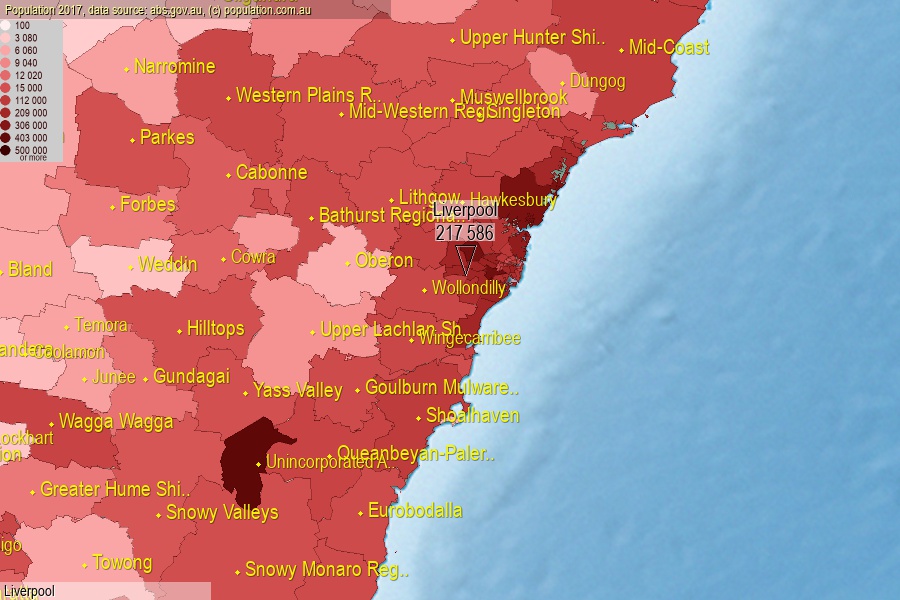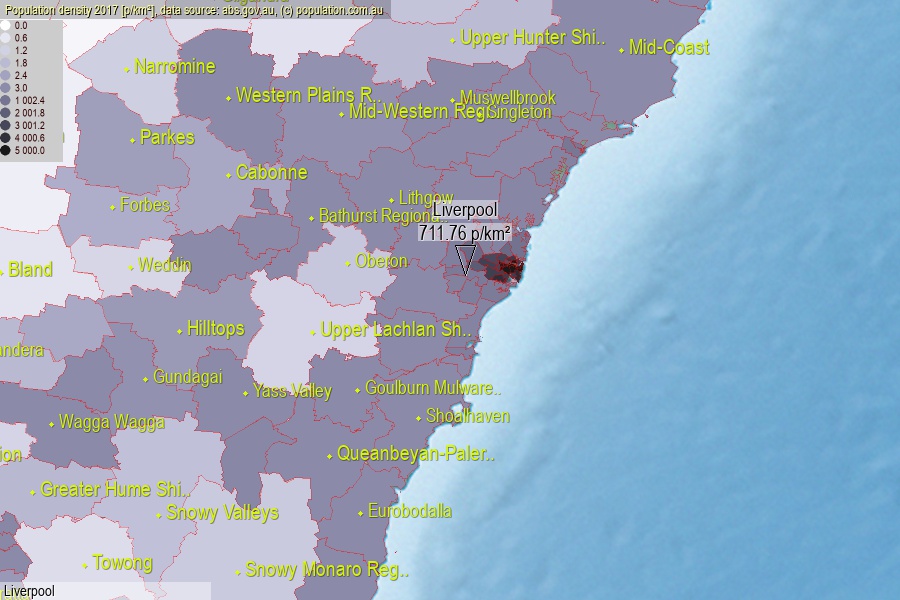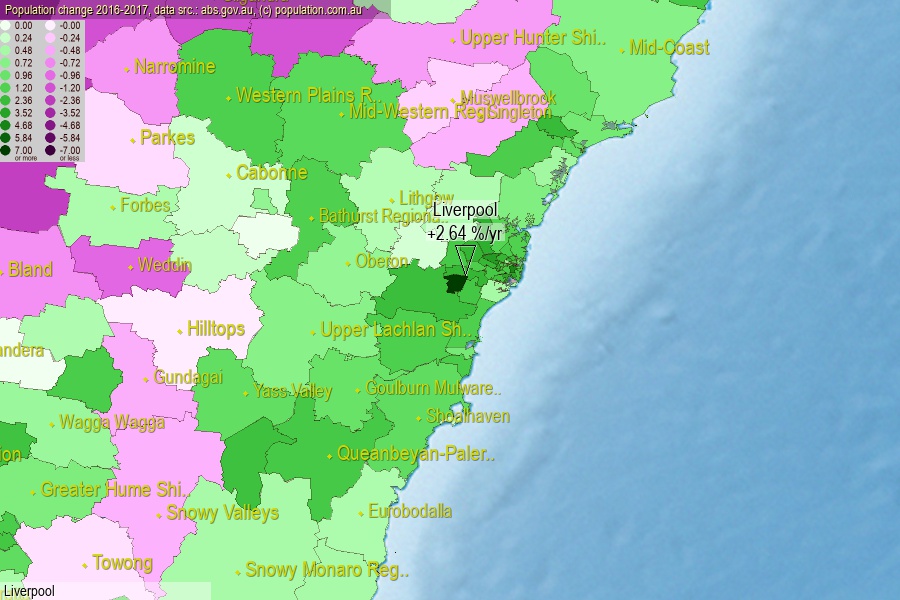 population.com.au
population.com.auLast official estimated population of Liverpool City (as Local Government Area) was 217 586 people (on 2017-06-30)[2]. This was 0.88% of total Australian population and 2.735% of NSW population. Area of Liverpool is 305.70 km², in this year population density was 711.76 p/km² . If population growth rate would be same as in period 2016-2017 (+2.64%/yr), Liverpool population in 2025 would be 268 084. [0]



Click to enlarge. Liverpool is located in the center of the images.
Population [people], population density [p./km²] and population change [%/year] [2]
[1996-2001] +4.92 %/Y
[2001-2002] +2.46 %/Y
[2002-2003] +1.19 %/Y
[2003-2004] +1.09 %/Y
[2004-2005] +1.11 %/Y
[2005-2006] +1.43 %/Y
[2006-2007] +1.77 %/Y
[2007-2008] +2.60 %/Y
[2008-2009] +2.45 %/Y
[2009-2010] +1.76 %/Y
[2010-2011] +1.72 %/Y
[2011-2012] +1.97 %/Y
[2012-2013] +2.25 %/Y
[2013-2014] +2.35 %/Y
[2014-2015] +2.73 %/Y
[2015-2016] +2.80 %/Y
[2016-2017] +2.64 %/Y
[0] Calculated with linear interpolation from officially estimated population
[1] Read more about LGA and Australian Statistical Geography Standard (ASGS) on abs.gov.au
[2] Population data from Australian Bureau of Statistics (Population and density: 2017; change: 2016-2017)
[3] Digital Boundaries: Australian Statistical Geography Standard (ASGS) 2016.